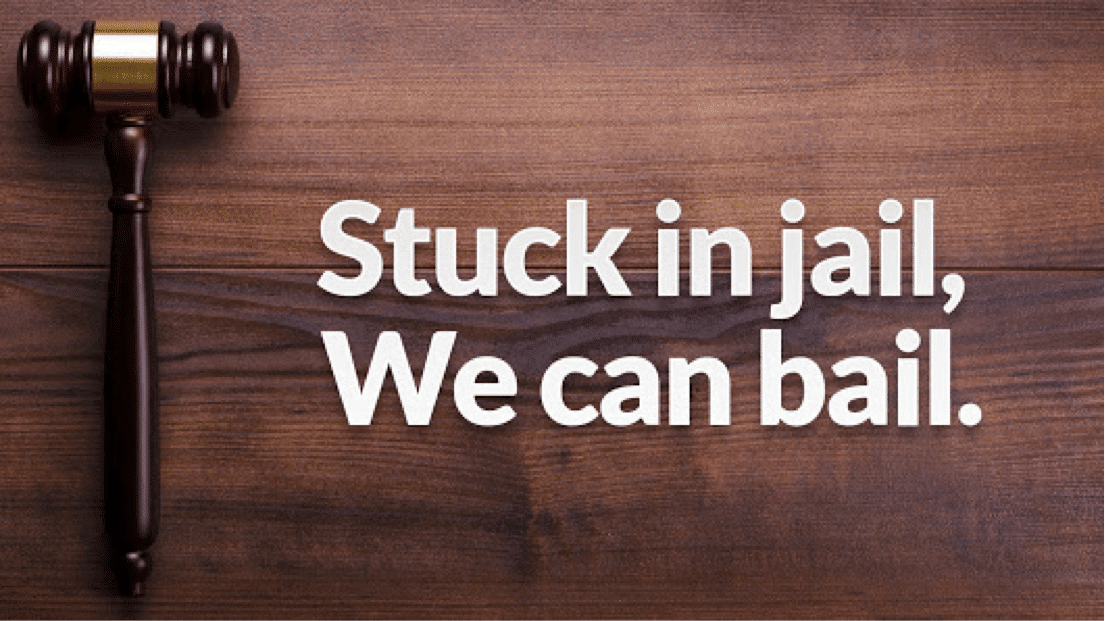Comprehending the Essentials of Bail Bonds: What You Need to Know
Navigating the complexities of bail bonds is an essential aspect of the legal system that can considerably affect the accused's journey through court proceedings. A bail bond functions as a financial guarantee for the court, facilitating temporary release from wardship while waiting for trial. Nonetheless, the details of just how bail bonds operate, the various kinds offered, and the important factors to consider in choosing a trustworthy bail bondsmansman can be intimidating. Understanding these components is crucial, as the repercussions of bad moves might result in unforeseen difficulties that prolong far past the court. What are the fundamental facets that must understand to effectively steer this process?
What Is Bail?
Bail is an economic plan that permits an individual charged of a criminal offense to be released from guardianship while waiting for test. The primary function of bail is to ensure that the accused stands for future court proceedings (Bail Bondsman). Typically set by a court, the bail quantity varies depending upon the nature of the criminal activity, the defendant's criminal history, flight danger, and various other relevant aspects
When bail is provided, the accused or an agent needs to pay a defined sum, which may be in money or with a bail bond. In many cases, bail can be denied altogether, particularly for severe offenses or if the suspicious postures a significant risk to public security. The idea of bail is rooted in the anticipation of innocence, strengthening the concept that people must not be penalized prior to a sentence.

Recognizing Bail Bonds
A bail bond is an economic tool that facilitates the release of an accused person from guardianship, serving as an assurance for their appearance at future court dates. This setup permits offenders to preserve their freedom while waiting for trial, lowering the concerns related to incarceration. The bail bond procedure commonly includes a third-party firm, understood as a bondsman, who offers the required funds to the court on part of the implicated.
Bail bonds can be found in various kinds, including surety bonds, building bonds, and cash money bonds, each with distinctive demands and implications. Guaranty bonds, one of the most usual type, need a premium payment, usually a portion of the overall bail amount, which is non-refundable. On the other hand, a residential property bond includes making use of actual estate as security, while cash bonds demand the full bail total up to be paid in advance.
Recognizing the nuances of bail bonds is important for defendants and their households. It is necessary to understand the potential monetary implications, including charges and responsibilities to the bail bondsmansman, as well as the lawful responsibilities connected to ensuring court looks. Knowledge of these components help in making educated decisions during a difficult time.
How Bail Bonds Work
The procedure of safeguarding a bail bond usually involves several essential steps that ensure the implicated can regain their flexibility while awaiting trial. The specific or their representative get in touches with a bail bondsman, who analyzes the case and the linked risks. The bail bondsman will require information regarding the charged, consisting of the costs, the bail quantity established by the court, and any pertinent individual details.
Once the bail bondsman concurs to offer the bond, the accused or their representative should pay a non-refundable like it charge, generally a percent of the overall bail amount. This cost makes up the bail bondsman for tackling the economic risk of making certain the accused appears in court. In many cases, security might also be called for, such as residential property or beneficial possessions, which serves as security for the bond.
After the charge and any kind of collateral are set up, the bail bondsman sends the required documents to the court. Upon authorization, the bail is posted, and the implicated is launched from wardship. It is important for the charged to follow all court days and problems, as failure to do so can cause the forfeit of the bond and prospective lawful consequences.
Kinds Of Bail Bonds
Different types of bail bonds are readily available to match different conditions and demands. The most usual type is the surety bond, where a bondsman warranties settlement of the full bail quantity to the court in exchange for a non-refundable charge, typically around 10% of the bail. This plan allows defendants to safeguard their launch without paying the entire bail upfront.
Another type is the cash money bond, which requires the accused or a co-signer to pay the full bail quantity in cash money directly to the court - Los Angeles Bail Bondsman. This option is typically sites liked for reduced bail amounts, as it guarantees the money is returned upon the offender's appearance in all court procedures
Home bonds involve the use of property as security. In this case, the court puts a lien on the property, which can be waived if the offender fails to appear.
Finally, government bail bonds are particularly designed for federal situations, often including higher quantities and extra complexities. Comprehending these different bail bond kinds is crucial for offenders and their family members in making notified choices throughout a tough time.
Picking a Bond Bondsman
When choosing a bondsman, it is crucial to consider several essential elements that can impact the general experience and result. Assess the bail bondsman's reputation by researching on-line testimonials and getting suggestions from relied on resources. A reliable bail bondsmansman will certainly have a background of professionalism and effective instances.

It is additionally vital to understand the charge structure. The majority of bail bondsmensman charge a non-refundable fee, generally around 10% of the bail amount. Be wary of any kind of concealed charges or unusual payment techniques. Transparency in prices is a characteristic of a reliable bail bondsman.
Conclusion
In recap, comprehending the fundamentals of bail bonds is vital for people associated with the lawful system. Bail works as an economic assurance of court look, while different kinds of bail bonds provide to different conditions. Comprehending the functional systems of bail bonds and selecting a trusted bail bondsmansman can considerably affect the overall experience. A detailed assessment of readily available options makes certain informed decision-making, eventually facilitating a smoother navigation via the complexities of the legal procedure.
The details of how bail bonds operate, the numerous kinds available, and the crucial factors to consider in picking a reputable bail bondsman can be intimidating. The bail bond process normally entails a third-party firm, known as a bail bondsman, who offers the required funds over here to the court on behalf of the implicated.
The most typical kind is the guaranty bond, where a bond bondsman warranties settlement of the complete bail quantity to the court in exchange for a non-refundable cost, commonly around 10% of the bail. Bail offers as a monetary guarantee of court look, while different types of bail bonds cater to different circumstances. Understanding the functional devices of bail bonds and selecting a trusted bail bondsman can significantly affect the general experience.